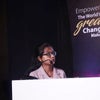From Struggling For 'Bijli, Sadak and Paani' To Becoming the Third Richest In the World: The Journey Of Gautam Adani The billionaire divided his career growth into four phases and gave credits to the era of Rajiv Gandhi as the initial turning point of his career
Opinions expressed by Entrepreneur contributors are their own.
You're reading Entrepreneur India, an international franchise of Entrepreneur Media.

Born in a middle-class family and having lived through the 1970s, 80s struggling for bijli, sadak and paani, instilled a huge desire in billionaire Gautam Adani to transform India.
"That was a time when India had a huge infrastructure deficit in ports, airports and other areas. In contrast, China, which also became independent around the same time as India and had a lower per capita income than India in 1990, began leapfrogging ahead of India in development. All these issues instilled a huge desire in me to do whatever I could to transform India, particularly in infrastructure and make the country stronger," said Gautam Adani, chairperson of Adani Group. He was speaking to India Today TV.
Apart from being the richest Indian and the richest Asian, he is also the world's third richest person. So, how does it feel? "These rankings and numbers do not matter to me. They are only hype. I am a first-generation entrepreneur who had to build everything from scratch and I get my thrills from handling challenges – the bigger they are, the happier I am."
The billionaire divided his career growth into four phases and gave credits to the era of Rajiv Gandhi as the initial turning point of his career. "Many would be surprised to know that it all began during the tenure of Rajiv Gandhi as Prime Minister. The second big push I got was in 1991, when the duo of Narasimha Rao and Manmohan Singh initiated sweeping economic reforms. Just like many other entrepreneurs, I too was a beneficiary of those reforms," he said, adding that the third turning point for him came in 1995 when Keshubhai Patel was sworn in as Gujarat chief minister and the fourth turning point was in 2001.
The recent takeover of the NDTV media group has drawn a lot of flak, commenting on it, he said, "On editorial independence, let me say categorically that NDTV will be a credible, independent, global network with a clear lakshman rekha between management and editorial."
The year 2022 was an exceptional year in many ways for the business tycoon, from leading a successful Adani Wilmar IPO to becoming India's second largest cement manufacturer after acquiring ACC and Ambuja Cements for around $10.5 billion, the group has made India's largest-ever M&A transaction in the infrastructure and materials space. "All our businesses are run by professional, competent CEOs. I do not interfere in their day-to-day functioning. My role is limited to formulating strategy, capital allocation and their review. It is for this reason that I have time to not only manage such a large and diverse organization but also incubate several new businesses and also look for new opportunities for acquisitions."
The business tycoon is betting big on Green energy as he thinks it is not only a huge business opportunity but also a social responsibility. "India has brought a very attractive production linked incentive scheme (PLI) which has made the green hydrogen business viable and attractive. In fact, I am very confident that with this enabling support we will not only meet domestic demand but soon become a green hydrogen exporter."
With a personal net worth of $150 billion, Gautam Adani has become the richest Indian overtaking Mukesh Ambani, chairman and managing director of Reliance Industries Ltd.










